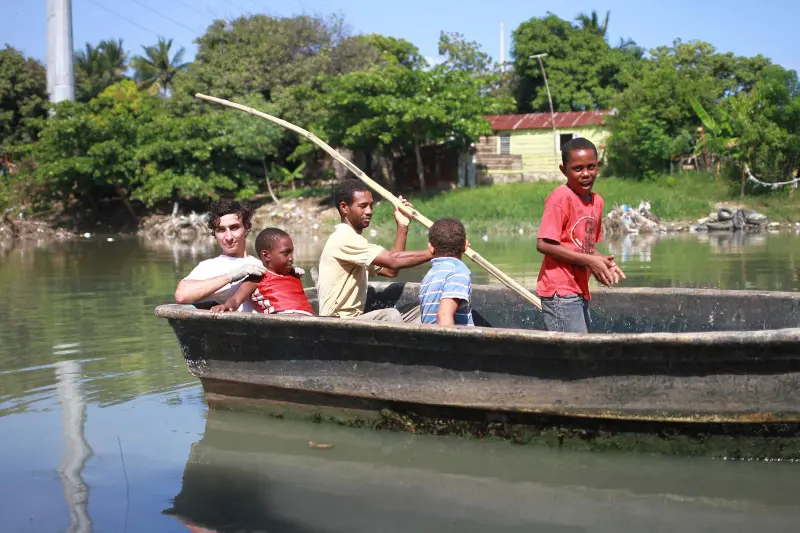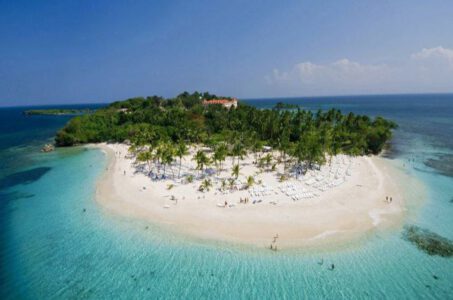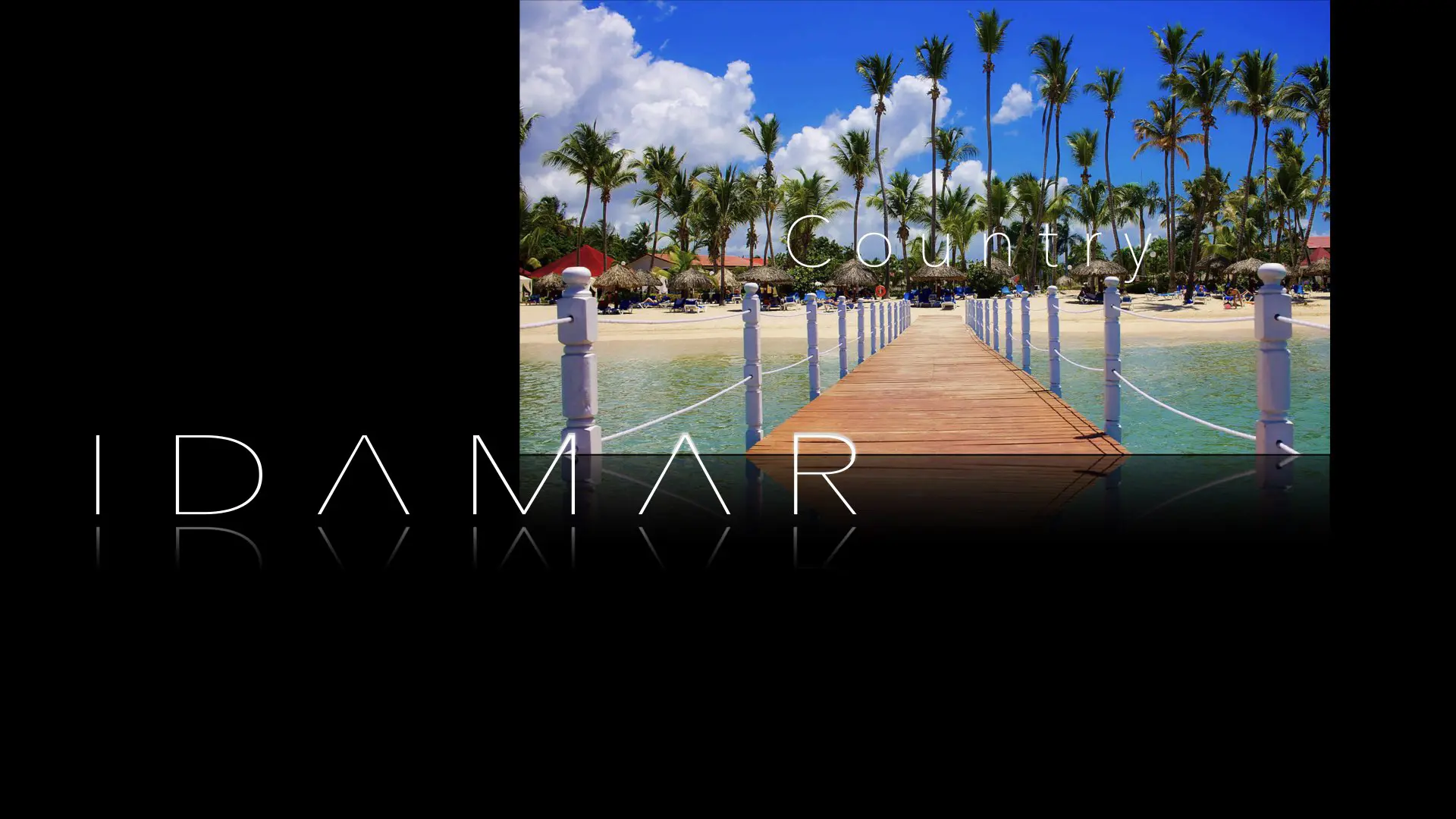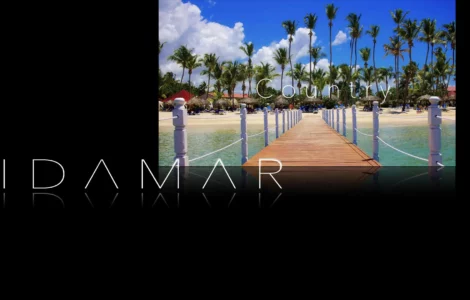The Dominican Republic is a democratic country with more than 10 million inhabitants. It stretches over 48,442 km2, almost the size of Slovakia. The breathtakingly beautiful beaches lie to the south on the Caribbean Sea and to the north on the Atlantic Ocean. As of 2016, over 830,000 cruise ship passengers arrive in the Dominican Republic each year. The country welcomes a total of six million guests every year.
Quisqueya (mother of all earth) is what the Dominicans affectionately call their homeland. Very few people know that this country is a country of superlatives. The first Spanish settlers settled here when they arrived in the so-called “New World” with Christopher Columbus in 1492. Columbus and the representatives of the Spanish crown established their first settlements on the territory of today’s Dominican Republic. The reasons for this included the fertile soil and the gold deposits. At that time, Santo Domingo was America’s first city and today it is the capital of the Dominican Republic: Santo Domingo is still a prosperous place and many buildings date back to the time of the Spanish conquerors. You almost breathe American history.
People

In the mountains inland in Constanza there is even a Japanese community, while in the north of the peninsula of Samaná you can find French and Italian communities. You will quickly make friends with the compatriots. Even if modern life and globalization have found their way into the tourist centers, little has changed in the way people in the country treat each other. Politeness and hospitality are very important, especially in the country where the tourist hustle and bustle abruptly decreases and you can immerse yourself in another world. There it is a matter of course to help visitors or neighbors and to share the food with them. “Families” has a stand there that we rarely know from Europe. The family is not a connected unit there, but a form of society that is open to everyone. And anyone who wants it is quickly part of such a family.
The people show a lot of warmth in the truest sense of the word and have a thoroughly romantic streak.
Life is there to be shared and enjoyed to the fullest.
The islandgroup
In the Dominican Republic you will find what is probably the greatest variety of different landscapes in the entire Caribbean. Sunny sandy beaches and refreshingly cool mountains with villages that are more than 500 m above sea level are close together. The country’s famous coastline offers over 1,600 km of breathtakingly beautiful and easily accessible beaches. Nevertheless, the republic is characterized by mountainous landscapes, and the Cordillera Central mountain range even has the highest mountain in the Caribbean, Pico Duarte (3,087 m).
Over 25% of the national territory are protected areas, but are mostly easily accessible. Lush valleys, cloud forests, national parks on land and under water, rivers, imposing waterfalls, coral islands, caves from the Taíno Indian era hidden deep in the dense rainforest, pine forests, all this can be found on the island. The saltwater lake “Lago Enriquillo”, which is larger than Manhattan, is 40 m below sea level, making it the lowest point in the Caribbean. Even connoisseurs of other tropical climate zones will be impressed by this variety.
The national parcs
There are a total of 29 national parks in the Dominican Republic. These often lush areas are among the natural treasures of the Dominican Republic, along with the numerous sandy beaches. The Ministry of the Environment is strongly committed to the preservation of all national parks and natural resources.
Cotubanamá National Park, also known as Parque Nacional del Este, is located near Punta Cana, La Romana and Bayahibe. Here you will find impressive Taíno caves and fresh water springs. Part of the park are the islands of Saona, one of the most important nesting sites for sea turtles in the Dominican Republic, and Catalina with its frigate bird colonies on the Catalinita sandbar and offshore coral reefs.
Los Haitises National Park is located on the coast of Samaná. Here is one of the most wonderful landscapes in the Dominican Republic with imposing rocks rising out of the sea, amidst dense mangrove forests. Ancient rock carvings and cave paintings by the Taíno Indians can be found in the huge caves. It can be reached by boat from Samaná, but access via the Sabana de la Mar road is particularly adventurous.
In the northwestern desert-like region of Montecristi National Park is El Morro, an imposing limestone mesa that towers more than 200m above the Atlantic Ocean. The inhabitants of this coastal strip are particularly proud of their “table mountain”. The park includes seven coral islands that are almost completely untouched and are among the least visited islands.
Two other national parks, José Armando Bermúdez and José del Carmen Ramirez, are located near Jarabacoa and Constanza, in the mountainous center of the country with the highest peak in the Caribbean, Pico Duarte.
Further southwest is the largest national park, Jaragua, part of a UNESCO biosphere reserve. It encompasses a wide variety of ecosystems, from dry forest with cacti and rhino/Hispanic iguanas to beaches where sea turtles lay their eggs and flamingos strut. 400 different plant species and 130 bird species adorn this true natural paradise.
The islands

Beautiful islands lie off the coast of the Dominican Republic, both to the south in the Caribbean Sea and to the north in the Atlantic Ocean. Especially beautiful are the islands of Saona and Catalina. The partially inhabited Isla Saona lies within a national park. It has numerous fantastically beautiful sandy beaches. Playa Palmilla, with its shallow waters, is the largest natural pool in the Caribbean.
Experienced divers will enjoy the crystal clear, turquoise waters teeming with starfish, coral and other tropical creatures, as well as exploring shipwrecks and caves. The archipelago called Cayos Siete Hermanos is off the beaten track in the wild northwest of the Dominican Republic. It can be reached from the Montecristi coast. Herons, pelicans and frigatebirds nest on these protected islands. For snorkelers and divers you will find some of the most pristine dive sites in the country
Waterfalls
Numerous rivers originate in the mountain regions and then flow through the plains of the Dominican Republic. The country’s most important river is the Yaque del Norte. It rises at the Pico Duarte in the Cordillera Central mountain range and has an impressive length of almost 300 km. The Yaque del Norte is not only used for irrigation and thus for agriculture, but is also a Mecca for rafting adventurers. The rapids ride begins in Jarabacoa. The second longest river is the Yuna. It flows through the Cibao Valley and empties into the sea at Samaná Bay.
One of the most beautiful watercourses in the Dominican Republic is the Río Chavón in La Romana. You can experience this beautiful river up close by taking a boat trip or kayaking. The Río Chavón is also known as one of the filming locations of the movie “Apocalypse Now”.
If you head southwest, you’ll find plenty of water adventures. In the province of Barahona, the rivers are one of the main attractions for visitors. Take a break and cool off in emerald pools and waterfalls on the San Rafael and Los Patos rivers, or at one of the estuary amusement parks.
Rivers and waterfalls are omnipresent in the Dominican Republic, both in the tourist areas and in more remote regions. The most visited waterfalls are the 27 Charcos de Damajagua, a waterfall park in the province of Puerto Plata. The impressive waterfalls tumble thunderously over limestone rocks into deep pools. If you’re brave enough, you can take an excursion to explore the falls, jumping or sliding from pool to pool as you go. There are many other, lesser-known waterfalls to explore in the lush hills of Puerto Plata.
El Limón in Samaná is one of the most impressive waterfalls in the Dominican Republic. After a challenging one-hour hike or horseback ride through the subtropical forest, you will reach this 51.8 m high waterfall.
In Jarabacoa, waterfalls are a must-see. This also applies to the Salto Baiguate or the Salto Jimenoa, which served as the location for the Hollywood film “Jurassic Park”.
The province of Monte Plata is easily accessible from the entire southeast coast. You can drive to this land of waterfalls in less than two hours. Probably the most impressive is the Salto Alto, which falls from a height of more than 20 m. The nearly 20 m high Salto de Socoa with its emerald green waters is located on the main road between Santo Domingo and Samaná.
Desert
Landscapes of the arid south-west of the Dominican Republic are more desert-like. The landscape is characterized by up to 35 m (!) high sand dunes, the Dunas de Baní. The impressive dunes near the village of Las Calderas near the town of Baní are protected. From the highest dune you can see the white sand of Playa Las Salinas on one side, with huge waves breaking on it, and the beautiful bay of Las Salinas on the other.
Lakes and lagunas
Landscapes of the arid south-west of the Dominican Republic are more desert-like. The landscape is characterized by up to 35 m (!) high sand dunes, the Dunas de Baní. The impressive dunes near the village of Las Calderas near the town of Baní are protected. From the highest dune you can see the white sand of Playa Las Salinas on one side, with huge waves breaking on it, and the beautiful bay of Las Salinas on the other.
Mountain ranges

Five major mountain ranges dot the landscape of the Dominican Republic, from which much of the fresh water originates. The mountains also offer protection from violent storms.
The largest and most important mountain range is the Cordillera Central, which is often referred to as the backbone of the country. Located in the heart of the Dominican Republic, it stretches from the Haiti border to Constanza, Jarabacoa and the Central Region. Here lies the Pico Duarte, which at 3087m is the highest mountain in the Caribbean.
The Dominicans call this rugged mountain landscape with its low temperatures the “Dominican Alps”.
The second largest mountain range is the Sierra de Bahoruco in the southwest. It runs parallel to the Cordillera Central with an average elevation of about 1,500 m. The nearby Sierra de Neiba has Taíno Indian caves and numerous fresh water springs.
Other mountain ranges:
- The Cordillera Septentrional stretches from Montecristi to Nagua with an average altitude of over 500 m.
- The Cordillera Oriental is located in the east of the Dominican Republic and has an average altitude of 800 m.
Caves
Rock carvings and cave paintings are found throughout the Dominican Republic, testifying to the presence of the island’s indigenous people.
Cotubanamá National Park, accessible from Boca de Yuma, contains some of the most important caves, such as the Cueva de Berna, where you can see Taíno-era rock carvings. Scape Park Amusement Park is an area in the middle of the rainforest with a series of natural caves. You can even swim in one of these caves.
The southwest of the Dominican Republic is a popular destination for cave lovers. Here are some of the most important caves from the Taíno period. El Pomier in San Cristóbal has 55 caves, not all of which are accessible. The many rock drawings are impressive. The Caritas de Los Indios Cave, in the Enriquillo area, is above sea level and is decorated with numerous pictograms. The Cueva de la Virgen in Barahona is particularly mysterious. According to legend, the spirit of a woman who can turn visitors into stones lives here. So far, however, all visitors have come out safely.
To the north, in the province of Hato Mayor, lies the karstic Cueva Fun Fun, hidden deep in the rainforest. To get to know this subterranean world, one must first abseil and accept getting wet while exploring this grotto.
In the southeast, near Santo Domingo and La Romana, are two of the most beautiful cave systems in the Dominican Republic. They are easy to explore via catwalks.
- The Tres Ojos National Park with its bright blue lagoons and the
- Cuevas de Las Maravillas, a 800 m long cave system where you can admire numerous rock carvings.
Freshwater pools
If you want to swim in one of the freshwater pools without much effort, the Hoyo Azul in Scape Park/Punta Carna is the right place for you. At nearly 15m deep, the beautiful blue pool is the perfect place to take a dip in the shade of the rainforest. The freshwater pool Cenote Indígena Las Ondas is well hidden in a cave on the park grounds.
There are also plenty of freshwater pools to discover in the extensive hilly landscape of Puerto Plata, such as the Charcos de Damajagua. But even in the mountains there are pools of water away from tourism that are fed by springs, such as the turquoise pools hidden in the forest near the mountain village of Tubagua.

